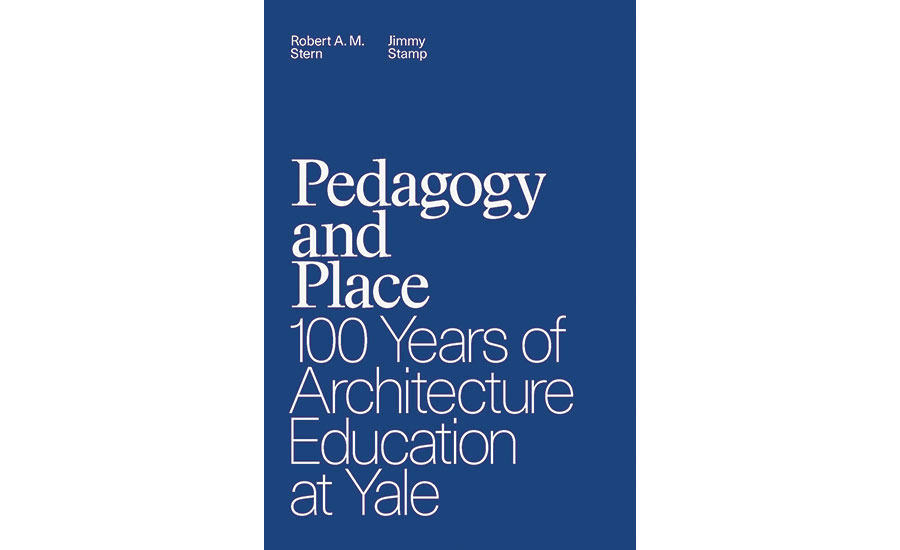Pedagogy and Place: 100 Years of Architecture Education at Yale, by Robert A.M. Stern and Jimmy Stamp. Yale University Press, May 2016, 668 pages, $100.
If you want to know the history of the Yale School of Architecture, you’d be hard pressed to ask anyone more knowledgeable than Robert A.M. Stern, its dean from 1998 until this past July. Published to mark the 100th anniversary of the first class to graduate from Yale’s professional program in 1916, Pedagogy and Place is a tribute from the erudite and prolific author to his alma mater and academic home for the last 18 years. Written in collaboration with Jimmy Stamp, whose witty musings on architecture have appeared in The Guardian, Smithsonian, and Wired, its 668 pages make it a weighty tome. Fortunately the weight is leavened, despite the pedantic title, by unexpectedly lively text and carefully curated archival images. Given the visual nature of the subject, it’s disappointing there aren’t more.
Organized in 10 chronological chapters, Pedagogy begins with an account of Yale’s early attempts to emulate the Ecole des Beaux Arts. Subsequent chapters describe the surprisingly slow shift to Bauhaus-inspired modernism, then to Brutalism, Postmodernism, and all that has followed, including a downward slide in the school’s reputation prior to Stern’s arrival as dean.
The extensively researched narrative includes stories of both the school and the people who shaped it. The star-studded roster of deans, professors, studio critics, and students includes Raymond Hood, George Howe, Eero Saarinen, Paul Rudolph, Louis Kahn, Vincent Scully, Richard Rogers, Norman Foster, Charles Gwathmey, Charles Moore, Zaha Hadid, and Deborah Berke (the new dean of the architecture school), to mention just a few.
The chapters spanning the ’60s are especially noteworthy. “A Time of Heroics, 1958–1965” chronicles Rudolph’s contributions as professor and chairman, as well as architect of the controversial Art & Architecture Building. “Architecture or Revolution, 1965–1971” describes Moore’s iconoclastic reaction to Rudolph’s formalism. Among the more entertaining passages is an account of Moore’s attempt to de-emphasize Yale’s traditional ties to New York where, he complained, “the profession was addicted to glamour . . . the New York offices would come recruiting at Yale . . . and I would say ‘Don’t you go to Pratt and to Cooper Union and to schools around New York?’ and they would say, ‘We get our draughtsmen from there. We come to Yale for our future partners.’ ”
In the final chapter, Stern reflects candidly on his years as dean. He remembers the disdain —from modernists who feared he might turn Yale into a bastion of historicism—that initially greeted his appointment, but the success of his tenure has largely silenced his critics. He sidestepped the style wars by assembling a faculty that mixed cutting-edge practitioners like Frank Gehry, Peter Eisenman, and Greg Lynn with classically minded colleagues such as Leon Krier and Demetri Porphyrios. He also put the school on firm financial footing, renovated the derelict A&A Building, upgraded the quality of both students and teachers, and established a curriculum that stresses fundamental principles, thereby giving Yale’s previously tarnished reputation an impressive new luster. It’s a noble legacy.



Post a comment to this article
Report Abusive Comment